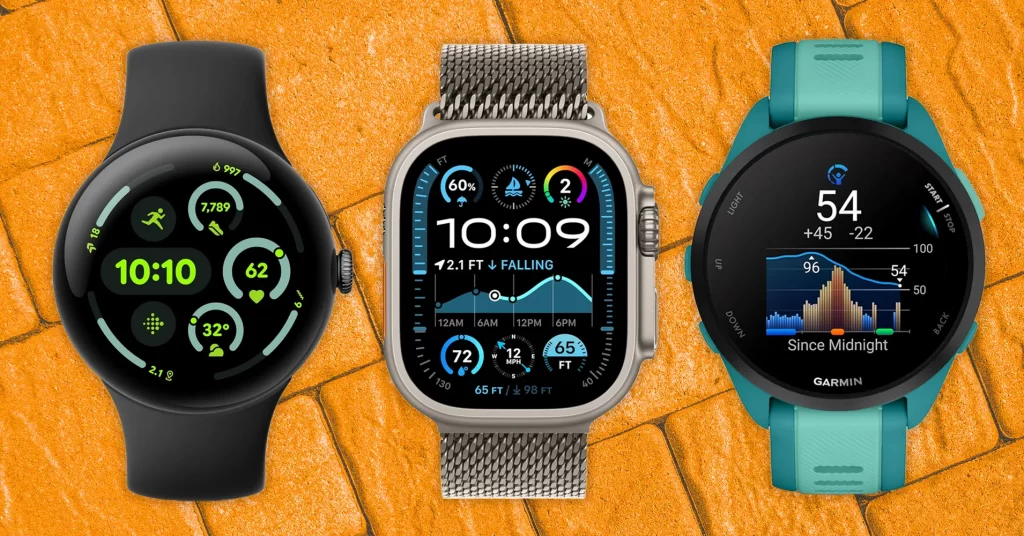From the time smartwatches were introduced, they have come a long way from their early days as simple wristwatches with added digital functionality. The smartwatches of today are sophisticated devices that serve as both personal assistants and health monitors. This evolution has transformed how the world thinks about wearable technology and its role in our daily lives. The increasing sophistication of these devices means they are becoming indispensable tools not just for fitness enthusiasts but also for individuals looking to monitor chronic health conditions or simply maintain a healthier lifestyle.
However, as at the end of 2024, global smartwatch shipments fell by 7 percent in quantity as compared to the same figure last year, as per Counterpoint research. This was the first ever global decline in this segment. The downturn was primarily due to a decline in shipments of Apple. There has been a significant weakness in the basic smartwatch segment in India. Consumer demand in India has declined due to a slower than anticipated replacement cycle and a lack of any significant innovation. Also, first-time buyers have not had a very satisfactory experience.
The global smartwatch adoption rate has reached a decent number of the adult population, indicating a growing interest in wearable technology. There is still a fairly large number of smartphone owners who have yet to use smartwatches. Therefore, it can be surmised that this segment still has room to grow.
The Smartwatch market is divided by different product types, each catering to specific needs and offering unique advantages. These types can include hardware, software, and integrated solutions, with varying levels of complexity and functionality. The end-users of the Smartwatch market are diverse, spanning industries such as healthcare, automotive, consumer electronics, aerospace, manufacturing, and more. Each sector benefits from the specific advantages that Smartwatch solutions provide. For example, the healthcare sector uses Smartwatch to improve patient outcomes through better diagnostics and treatment solutions, while the automotive industry relies on Smartwatch for advanced manufacturing and safety features. The needs of end-users vary widely, with some requiring highly specialized solutions while majority seek more general-purpose applications.
However, the effectiveness of smartwatch monitoring functions relies heavily on the accuracy and reliability of the sensors embedded within the smartwatches. The current sensor technology is fairly advanced, yet at times faces challenges in delivering precise readings under varying conditions. This can result in data that is not always reliable. This undermines the confidence that users have in their devices.
Also, as smartwatches start becoming more feature-rich, the demand for battery power increases. The many sensors that require significant power can quickly drain the battery, limiting the device’s usability and the duration for which continuous health monitoring can be performed.
With the onset of AI, the integration of artificial intelligence and machine learning with sensor data will enable the newer smartwatches to provide more personalized and predictive health insights. AI will help to analyze patterns in the data to identify trends or potential health issues before they become critical. This in turn will offer early warnings and tailored health advice. This could transform smartwatches into proactive health management devices.
Integration with smartphones, home automation systems, and many other IoT devices is on the rise, allowing users to control their environment from their wrist. Besides uninterrupted power in terms of longer battery life, the other key factor would be data protection and security. With cyber risks escalating in geometric progression, manufacturers will need to increasingly focus on security measures to protect user data. Features like biometric authentication and data encryption will need to become a pre-requisite standard to ensure user privacy and security.
In the initial stages, the smartwatch market was a mosaic of creativity. Brands experimented with diverse shapes, layouts, and functionalities. However, Apple’s debut redefined the form factor. While many brands now appear to be converging on a singular Apple-like aesthetic, this “Apple-ization” is simplifying consumer choices and catering to familiarity. It, however, is narrowing the scope of innovation. While imitation might be a form of flattery, it does create an innovation paradox. As brands converge on a singular design, the industry risks alienating consumers who crave differentiation.
The smart watch market presents significant opportunities for growth, driven by technological advancements and evolving consumer preferences. Companies that focus on innovation, personalization, and integration will be well-positioned to capture a larger market share. Those that are making basic versions or getting them made at cheaper and cheaper prices are likely to get into more and more trouble.
The smart watch market is on a trajectory of rapid evolution, driven by technological advancements, changing consumer demands, and a focus on integration and personalization. As smart watches become increasingly sophisticated and integral to daily life, they will continue to shape the future of wearable technology and redefine how consumers interact with digital devices. The ongoing innovation and expansion of smart watch functionalities promise an exciting future for both the industry and its users.
Finally, unlike for mobiles which have a refurbished market that improves standards of sustainability, there is not much data or information on what happens to smart watches that reach end of life.

